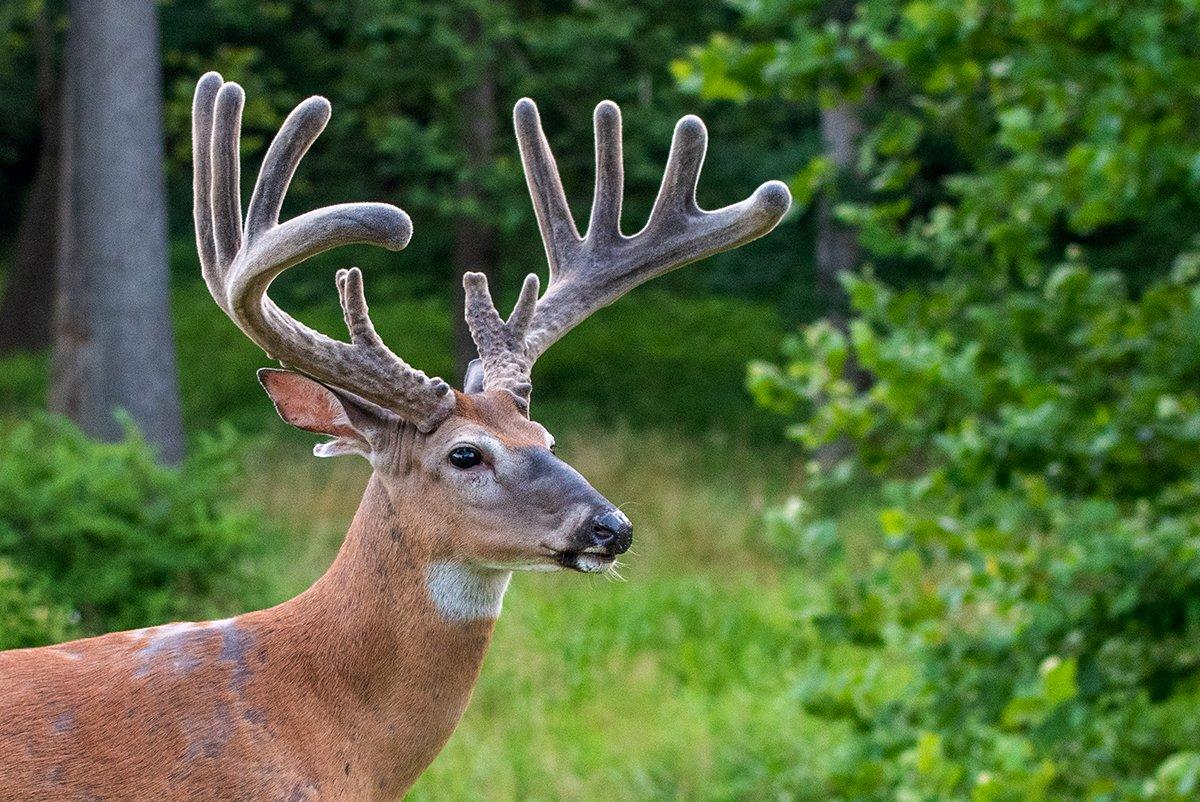Did you know velvet is hot to the touch and has its own insect repellent?
Over the next three months, buck racks will grow at a fast and furious pace, and the process is nothing short of amazing. Here's a look at 10 interesting facts.
- Growing antlers consist of a core of developing bone and cartilage covered with velvet. The antlers grow out and up from the tips, as cartilage is replaced by bone.
- According to scientists at the Mississippi State Deer Lab, velvet antlers grow rapidly in late spring and summer, as much as 3/4 inch a week for yearling bucks and 1 1/2 inches per week for adults.
- Did you know that velvet antlers, which grow via a complex system of blood vessels, are hot to the touch? Top whitetail scientist Dr. Grant Woods says, There is so much blood carrying protein and minerals to a buck's antlers this time of year that even small racks are easily detected by thermal imaging devices. Antlers glow like neon signs when [you're] flying over deer with thermal cameras in summer.
- Tiny hairs on the velvet stick out and make furry antlers look a tad thicker than they actually are. The hairs act as a radar system so a buck won't bump into trees or fence posts and damage his soft, developing antlers.
- The bone inside the velvet coating consists of calcium, phosphorus, magnesium, and other minerals. Although some nutrients are taken from food, a lot of minerals are sucked directly from the buck's skeleton, causing him to develop a sort of osteoporosis during the summer.
- Sebum, a waxy, semiliquid secretion on the hairs, gives the velvet a shiny look. Some biologists believe sebum acts as an insect repellent to keep biting flies off a buck's growing rack and face.
- In early August, antlers begin to change from soft and pliable to hardened bone. A buck's antlers will change from looking swollen or bulbous at the tips of the tines to a more normal diameter, Woods says.
- Biologist and whitetail expert Dr. Mickey Hellickson says the majority of antler growth, especially tine and beam length, will be complete by early August. During mid-to-late August, as the antlers begin to harden all over, rack growth slows and then stops. The tips of the tines are the last to solidify.
- Sometime between Sept. 1 and 15 in central and northern states, give or take a few days, bucks begin to shed the velvet. The cue for antler hardening and velvet shedding is the change in photoperiod caused by decreasing daylight and increasing darkness, which results in a significant increase in bucks' testosterone levels.
- Velvet stripping typically takes only a few hours, though it is not uncommon to see a deer walking around for a day or two with bloody velvet tatters.
One last thing you didn't know: The odd buck has been known to turn his head and peel and eat the dry velvet off his shiny new rack.
(Don't Miss: 10 Things You Didn't Know About Velvet Bucks)








